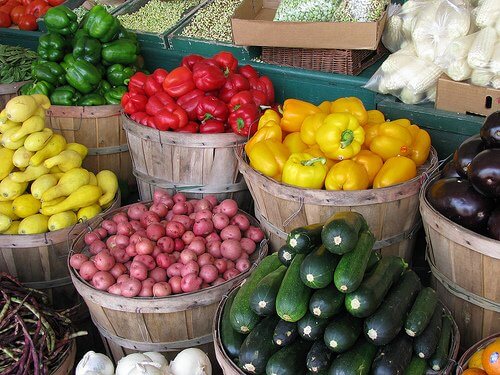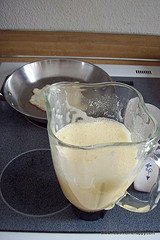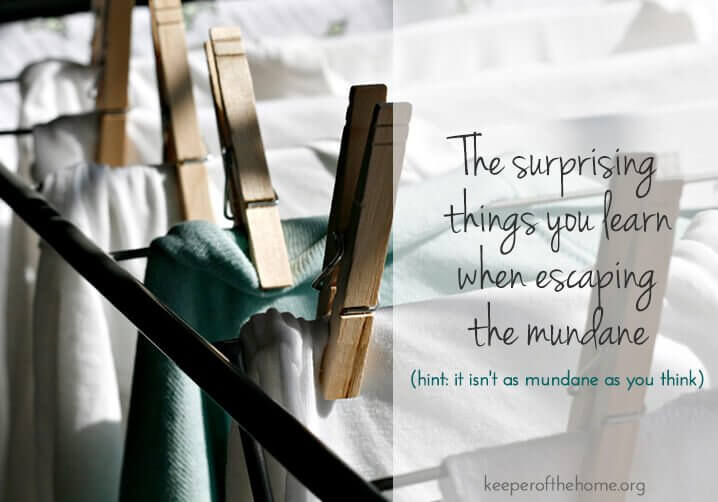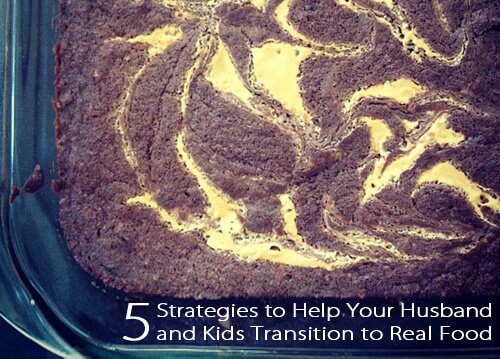Real Food on a Real Budget: Finding Sources for Purchasing Real Food

Today’s post is a brief excerpt taken from Chapter 2 of my new book, Real Food on a Real Budget. The chapter explores how we can examine the options and resources available to us, as we seek to find sources of high-quality AND affordable food wherever we live.
*******
It’s a bit of a game to me. I confess that I love the hunt of finding new resources for getting better and better quality foods on the same budget. I’m always on the lookout for new places to shop, new farmers or local suppliers to get to know, new services or co-ops or bulk suppliers to use.
The beautiful thing is that there are many options out there, if you’re willing to look beyond the doors of your regular grocery store! Here are just a few of the different types of resources there are when it comes to purchasing food:
∞ Direct from the farm
∞ Produce Markets
∞ Small, local shops (meat or deli, specialty grocery, etc.)
∞ Farmer’s Markets
∞ Co-ops or buying clubs
∞ Warehouse Clubs (Sam’s, Costco, etc.)
∞ Conventional grocery stores
∞ Natural/Health food stores
∞ Neighbours or families with small hobby farms
∞ Online stores
∞ CSA’s (community supported agriculture)
I’m sure there are others but these are some of the most common and readily available. You can see that the combinations and the ways that one might source out their food from these different options are endless!
For most of us, not all of these options are available. For instance, I am able to buy directly from a great produce market, but up until this past summer there wasn’t a farmer’s market within less than a 30 minute drive.
I currently live close enough to the US border (and have family who live there as well), which gives me access to a fantastic natural foods co-op. Should I move away from where we live now, that will cease to be an option for me and I will have to look into other options for buying many of my bulk foods, such as a going to a health food store or purchasing online and having my orders shipped to me.
It’s a matter of taking stock of your options, how worthwhile each of those options are, and then determining how you will use those to source out the food that your family needs.
A Few Good Places to Start… (the really practical stuff, but you gotta get the book to read it! 🙂
Would you like to read more? Purchase Real Food on a Real Budget today, in either a paperback or digital version.






I feel very lucky that there is a huge slow food movement in my area, and Michigan is #2 for crop variety after California. So we have tons of farmer’s markets, CSAs, herdshares, and even people just selling eggs and extra vegetables from their garden on the side of the road. I’ve also discovered that the health food store I used to avoid because I thought it was too expensive has very good prices on bulk herbs and grains / flour. (still too pricey on processed goods, but I shouldn’t be eating those anyway 😉
.-= Wendy (The Local Cook)´s last blog ..Taco Filling (with Vegetables!) =-.
do you mind if I ask what exactly you do budget for food each week or month and a reminder of how many people are in your family. If you chose not to want to answer I can understand. Just thought it would help me compare to my family.
We are a mom and dad a 5 yr old, 4 yr old, 2 year old and 5 month old who is currently just nursing.
thanks
@Amy Ritchie, I don’t mind answering. We have 5 in our family, mom, dad, 5 yr old, almost 3 yr old, and 8 mth old who is eating some solids. Also, we live in Canada, in a fairly expensive city (Vancouver area). We spend $450 each month and that includes all cleaning and household supplies, beauty care and toiletries, and some herbs/supplements.
It’s always so hard to compare budgets, because everyone’s circumstance really is unique, and what sounds like a small budget to one family in the city may actually sound like a really large budget to someone living in the midwest. But I hope that gives you at least a bit of an idea. I think that if I lived in the US or in a cheaper farming community, I would spend more like $350-400. If I lived in Canada still but not somewhere that had some access to good, local farms, I would probably pay more like $500+.
@Stephanie @ Keeper of the Home, Thanks for talking about your budget. I have been trying hard to pare ours down and reading other blogs, often from the midwest, I have been baffled at how they keep their grocery prices so low! $45/week??? Seriously??? But the cost of groceries varies so much by region (they mention strawberries on sale in one blog for $1/lb and I can’t even buy them that cheap if I pick them myself). Our family tries hard to buy few processed items (a dairy allergy helps keep that in check) and lots of fresh produce, which has made our budget very different from others on blogs. I really appreciate your perspective.
Just ordered the book…very excited! This is a balance I struggle with. I know we need real, natural food. All of my family experiences minor to major health problems when we eat otherwise. But somehow I still can’t get past the “save money, eat cheaper” mentality. Everytime I pay $8 for a pint of raw honey or $5/lb for organic butter I feel guilty!
@Jessica, I can understand struggling with that mentality, Jessica. I hope the book is helpful for you in that sense! I think one of the things that might be most helpful for you is to learn how much more affordable these good foods can become if you can buy them in bulk. It really makes a huge difference, as does buying good food seasonally and preserving it or stocking up your freezer.
Mostly, though, it’s important to remember that with our food expenses, we can either pay now (being willing to put a bit of extra money/effort up front into getting good food) or we can pay later (in terms of health, energy, etc.).
I read your blog every day and I’ve just put together that I believe you live near me. I live in Bellingham, WA. It’s fun to ready someone about natural homemaking and who is local. Thanks.
@Christine., Yes, we’re pretty close to Bellingham! About an hour away. 🙂
Stephanie,
I hope to purchase your book to learn how to affordably purchase good quality items such as coconut oil, whole wheat flour (I don’t have a mill), sugar, some organic produce, vitamins, and change over to all grass-fed meats. Our current grocery budget alone is $400 per month, and we have another $100 for wal-mart type items (toilet paper, etc.) We use an all cash system, but are far from perfect at using it…the check card comes in way too handy sometimes… I have no idea how to cut down any more than we already have… I already make our meals from scratch, and we rarely order out… We have a natural food store in town, but it seems so expensive. I’ve looked in to buying coconut oil in bulk from Mountain Rose Herbs, but didn’t make the purchase because of the shipping & handling cost. Do you feel the shipping and handling is worth the added expense?? Is it really saving then??
@Jill, If you can buy things in large bulk, and especially together with other people who can share the shipping costs, then it is worth it. In smaller orders or on your own, it might not be as worthwhile. If we do large orders, we also buy in very large quantities (like 5 gallons of coconut oil) and I go together with my SIL and MIL and sometimes with friends, so that we can all share the costs. Then, it’s definitely worth it!
Another quick question – What is the price of the paperback book? Earlier in the week it was $19 something, and then it was $25 something, and today I clicked on the link on this post and it was $21 something. Just wondering. Thanks:)
@Jill, Good question! 🙂 The paperback was $19.97 (plus shipping) because of a fantastic coupon code from Lulu.com (the company that prints and ships my books). But, that coupon ended. 🙁
Then I found a new coupon code and changed our price slightly so that I could still offer it at a similar discount, which worked out to $25 with free shipping. My husband suggested I change the price to reflect that it is $21 (plus shipping) so that readers could see that it is still almost the same sale as it was earlier in the week. In total, the price has never changed more than $2. It’s just the way that it has been displayed that has changed. Sorry for the confusion! 🙂
I will add, though, that the sale is going to last only until Sunday night and then it will be back to full price, and the coupon codes will depend entirely upon whether Lulu is offering them still or not. Hope that helps!
You asked about some creative ways to find sources…I am going to talk with all my friends and church family to see who is growing their own garden this year. I was thinking about letting them know that I would be willing to buy some of their surplus if there were any. I know this isn’t very predictable or reliable, but I am pretty good at finding a use for just about anything. We are limited on space in our garden and are just growing cucumbers, zucchini and tomatoes. I might be able to offer a trade if our small garden offers a bounty. We have almost no budget to work with, so time and hard work have to be our bartering tools.
I am just starting to realized how blessed I am in this area. I have so underutilized my resources. Off the top of my head I can think of 2 dairy farmers, and 2 friends who raise chickens. But I have never asked them about getting raw milk, or fresh eggs. Really what a no-brainer. I even live about 5 miles from a cheese farm. You have really got me thinking, I don’t have to settle for what is at the local superstore. Thanks. I am really enjoying your blog.
.-= Debbie´s last blog ..The start =-.